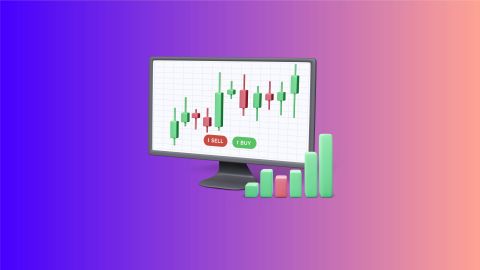Dividend yield meaning refers to the percentage of a company's stock price that is paid out to shareholders as dividends annually. It is calculated by dividing the dividend per share by the stock's current market price. Alternatively, it can also be expressed as a company’s total annual dividend payments divided by its market capitalization, assuming a constant number of shares. Typically, mature companies in sectors like utilities and consumer staples offer higher dividend yields. This metric is particularly valuable for income-focused investors, as it indicates the potential cash flow an investment may generate.
Key takeaways
A quick overview of dividend yield, its significance, and how it helps investors evaluate income potential.
- Dividend yield is the ratio of annual dividend payments to a stock's price, expressed as a percentage.
- It helps investors assess the income potential of an investment.
- Higher yields are common in stable industries like utilities.
- A consistent or growing yield may indicate a strong financial position.
What is dividend yield in share market?
For income-seeking investors, the dividend yield is a vital metric. It tells you how much return, in the form of dividends, you can anticipate from your investment. Here is what a high and low dividend yield can signify:
1. High dividend yield:
A company with a high dividend yield is distributing a substantial portion of its earnings to shareholders in the form of dividends. This can be an attractive prospect for investors who are seeking regular income from their investments. However, it is essential to consider why the company is paying out such high dividends. It could be due to a mature business model where growth opportunities are limited, or it might reflect the company's commitment to rewarding shareholders with dividends.
2. Low dividend yield:
On the flip side, a low dividend yield suggests that a company is retaining a more significant portion of its earnings to reinvest in the business for future growth. While this may mean lower immediate income for investors, it could indicate that the company has strong growth prospects and is focused on expanding its operations.
Also read: What is Dividend?
How is dividend yield calculated?
The dividend yield formula is simple and helps investors evaluate the return from dividends relative to a stock’s price.
Formula:
Dividend Yield (%) = (Annual Dividend per Share / Current Market Price per Share) × 100
Example:
Consider XYZ Company, which pays an annual dividend of Rs.5 per share. If its current market price per share is Rs.100, the dividend yield is:
(Rs.5 / Rs.100) × 100 = 5%
This means that for every share held, an investor earns a 5% return in the form of dividends. If you own 100 shares, your total dividend income would be Rs.500.
Factors affecting dividend yield
Several factors that influence dividend yield in share market, includes overall market conditions, individual security prices, and issuer performance. Let us explore them in detail:
- Stock prices
A company's stock price is the most significant factor. Rising share prices generally lead to lower dividend yields unless the company concurrently increases its dividend payouts. However, a declining yield due to a rising stock price isn't inherently negative. It can indicate growing investor confidence and potential for capital appreciation to offset a lower yield. - Industry trends
When analysing dividend yields, it's crucial to compare companies or funds within the same sector or category. Yields can vary considerably across industries due to inherent risk profiles and business models. The provided table exemplifies this variation by showcasing how average dividend yields shifted within different sectors during the COVID-19 pandemic. - Company growth
Established, mature companies with consistent performance are more likely to offer dividends and have higher yields compared to newer, smaller firms. Growth-oriented companies typically prioritize reinvesting profits to fuel expansion rather than distributing dividends. Understanding a company's growth stage helps assess its dividend yield in share market. - Company fundamentals
While high dividend yields can be enticing, they may also signal underlying issues within a company. A falling stock price caused by declining earnings or negative investor sentiment can lead to a higher yield. Additionally, struggling companies might resort to increasing dividends to attract new investors. However, such strategies are unsustainable unless the company implements a turnaround plan to support these elevated payouts.
Advantages of dividend yield
The dividend yield metric offers investors several advantages:
1. Income estimation:
It provides investors with an estimate of how much income they can expect to receive from their investments in the form of dividends. This is particularly valuable for investors who rely on their investments to generate regular income.
2. Comparison tool:
Dividend yield allows investors to compare different stocks and make informed investment decisions. By comparing the dividend yields of various stocks, investors can identify opportunities for potential income and evaluate the trade-offs between income and growth.
3. Indicator of dividend policies:
A company's dividend yield can offer insights into its dividend policies and practices. High dividend yields may indicate a commitment to returning profits to shareholders, while low dividend yields may suggest a focus on reinvesting earnings for growth.
Disadvantages of dividend yield
Despite its advantages, there are also limitations to consider:
1. Excludes capital gains:
Dividend yield does not take into account capital gains or losses, which are also important factors to consider when making investment decisions. For a more comprehensive view, it is essential to consider the potential for share price appreciation in addition to dividend income.
2. Risk of overlooking growth:
Companies with high dividend yields may not be reinvesting enough money back into their businesses, which could limit their growth potential. It is important to strike a balance between income and growth when evaluating investments.
3. Vulnerability to economic conditions:
Dividend payments are not guaranteed and can be influenced by economic conditions, company performance, and management decisions. Investors should be aware of the potential for dividend cuts during challenging economic times.
Dividend payout ratio
In addition to understanding the dividend yield, investors often consider the dividend payout ratio when evaluating dividend-paying stocks. The dividend payout ratio measures the percentage of a company's earnings that it pays out in dividends to its shareholders. This ratio offers insights into a company's dividend distribution practices and its commitment to returning profits to shareholders.
Example of dividend payout ratio
Let us take an example to illustrate the dividend payout ratio. Suppose Company ABC reports earnings of Rs. 1,000, and it pays out Rs. 400 in dividends to its shareholders. To calculate the dividend payout ratio, you divide the dividends (Rs. 400) by the earnings (Rs. 1,000) and multiply by 100. In this case, company ABC has a dividend payout ratio of 40%.
A high dividend payout ratio, such as 70%, suggests that the company is distributing a significant portion of its earnings as dividends, leaving a smaller amount for reinvestment in the business. On the other hand, a low payout ratio, say 30%, indicates that the company is retaining a larger share of earnings for reinvestment and future growth.
Conclusion
Dividend yield is a fundamental metric for investors, particularly those seeking income from their investments. It provides a clear estimate of the potential cash flow that can be expected in the form of dividends. However, it should not be the sole determinant for investment decisions. Investors must consider other factors, such as a company's financial health, growth prospects, and dividend payout policies.
While a high cash dividend yield can be appealing for income-oriented investors, it is essential to delve deeper into the reasons behind it. Companies with high yields may be mature with limited growth opportunities, while those with low yields might be reinvesting in their businesses for future expansion.
Investors should remember that dividend payments are not guaranteed and can fluctuate based on various factors, including economic conditions and company performance. A comprehensive evaluation of a company's financial health and growth potential should complement the analysis of dividend yield and payout ratios.




